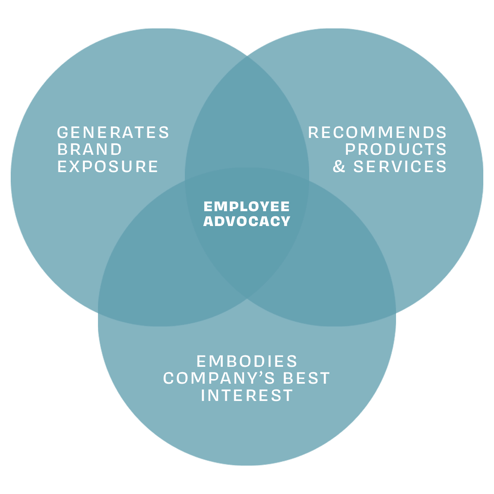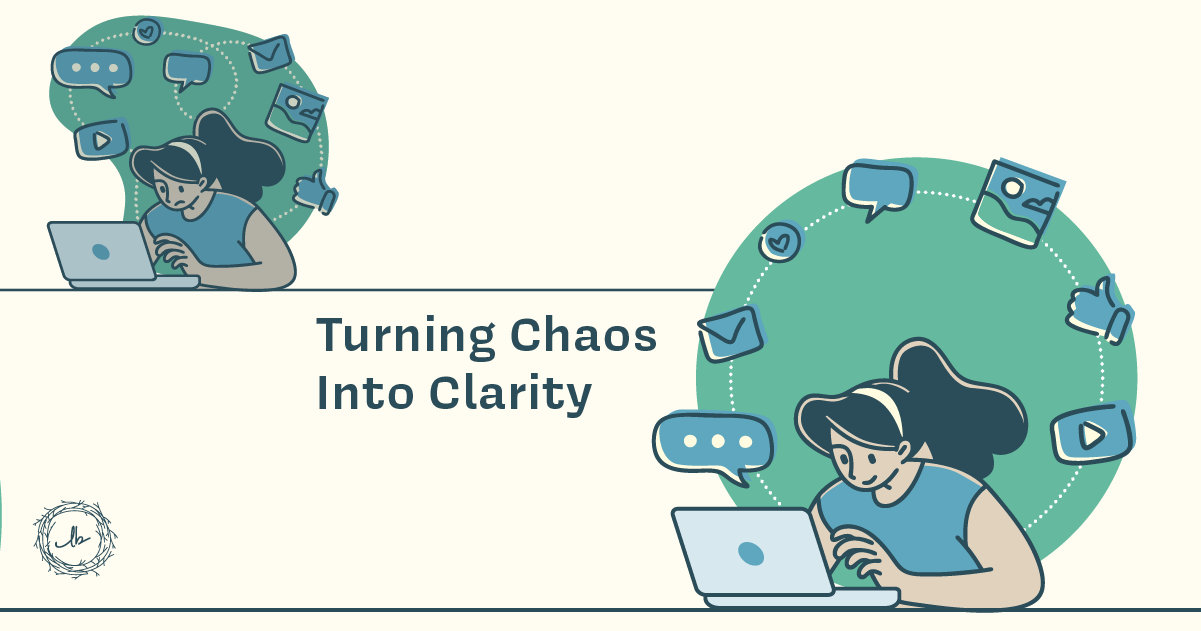Digital prowess is not a thing of the future. It's not even a thing of the present. It's a thing of the past. If you're just starting, you are going to have to catch up.
We are living in a digital world, and it's a noisy one.
Turn the chaos into clarity with a new understanding of social influence, employee advocacy, the buyer’s journey and how to tie it all together so your company gets the best return on investment.
Keep an Eye on Digital ROI
Times are changing, and this idea of an old-school, one-on-one network— it's not like that anymore. Beyond question, the digital age is upon us and has been for a while. With Covid-19 and the inability of in-person sales, we saw a significant shift to the digital marketing world.

The critical concept to grasp here is that you can still pull in the same, if not even better, ROI with a digital platform. Look at a particular page on your website, for example. It should bring in as much ROI as a salesperson would. What content or CTAs should you be putting out to increase that ROI? It all depends on your ideal client. And to understand marketing to the ideal client, we need to understand social influence.
Social Influence
Social influence is like the shiny new toy that everyone wants to put together, but most people tossed out the instructions and tried to figure it out independently. So, they’ll end up chasing social influence for a while before realizing they aren’t getting the results they wanted. Well, what did they expect when they skipped the instructions?
 Don't throw out your computer just yet. We can help.
Don't throw out your computer just yet. We can help.
What does this shortcut look like? Well, say someone isn’t thinking with their buyer persona in mind. Instead, they think about their personal preference and take their social influence where they frequently spend their time online.
We see people do the same thing with their marketing dollars all the time. They will choose their investments based on internal analysis. For example, these people will think, “I'm really good on LinkedIn. So I'll go to LinkedIn.” In the end, it doesn’t matter what you like. What matters is your most ideal client and where they are spending their time. This ideal client is also known as your buyer persona. Find out how to create the perfect persona with this guide.
The Buyer's Journey
Let's shift our focus to the buyer’s journey. This tool will transition your company into a stable lead generation system. Three stages make up what we call the buyer’s journey:
- Awareness - The buyer is becoming aware there is a problem.
- Consideration - The buyer defines the problem and considers their options to solve it.
- Decision - The buyer evaluates and makes the decision on who or what they want to solve their problem.
Quickly take account of where you're currently inserting yourself into the buyer’s journey. Got it? Now, let me tell you that a buyer reads an average of 12 pieces of content before they even choose someone to come along on their journey. So, my question for you is— How many of those 12 pieces of content belong to your company? If the answer is not many, then the issue becomes about inserting yourself earlier in the game, putting your company on the buyer’s radar.
 Introduce yourself, but make it subliminal.
Introduce yourself, but make it subliminal.
This is achievable through content creation specifically related to what that buyer finds important. You must show them why they should care, why they need YOU. How can you make their life better right now?
By inserting yourself earlier, you create a predictable lead generation system. You’re no longer waking up in the morning with fingers crossed that more people enter into the decision stage and pick you. You’re now an influencer in the buyer’s journey.
Always Be Helping
You’ll generate leads through new connections and conversations, but what about your current clients. This digital world is also a world of always be helping. Are you connected with your clients on LinkedIn? Do you provide value to them through the content you post? Make sure they don’t feel neglected because you spread your bandwidth too thin. Always be helping your clients, potential and current, to define and understand their problems. Then, offer up how your company can provide a solution.
 #alwaysbehelping
#alwaysbehelping
Employee Advocacy
Clients aren’t the only ones you can leave feeling neglected, and they aren’t the only ones with an influence on the success of your business. The people you have on your team right now don't want to be in the same position three or five years from now. They want to rock the world, and if you’ve got the right person, they want to push the company forward. That puts you in the position to think of systems that will actually help those people realize that dream.
Social influence is something that everybody on the team can do. Social media is something that people do in their day-to-day life already. Teach and serve the people in your network, and you’ll build rapport with them. They will then take that rapport and turn it into advocacy for the company in their own social circles. This is employee advocacy. A great employee advocacy program requires takeaways from these three sections: generating brand exposure, recommending products & services, and embodying the company’s best interest.

So, there you have it. You’re now in the digital world, and we’ve given you the tools to turn chaos into clarity. Keep an eye on that digital ROI. Make sure to use your social influence according to your buyer persona to insert yourself sooner in the buyer’s journey. And, without a doubt, always be helping. Help your potential clients, your existing clients, and your employees. Whether they’re aware of a problem, considering a problem, or deciding on a solution—always be helping.







Let Us Know What You Thought about this Post.
Put your Comment Below.